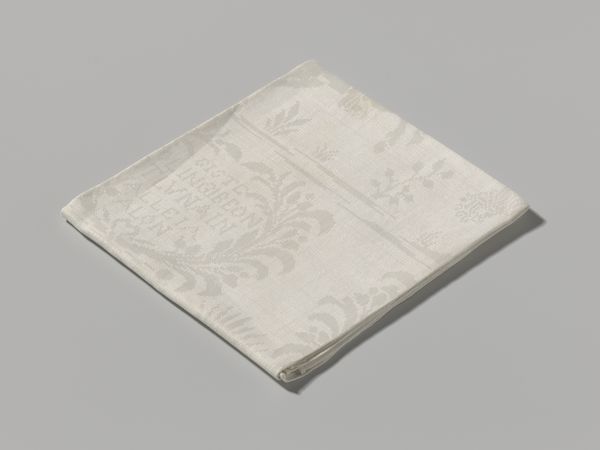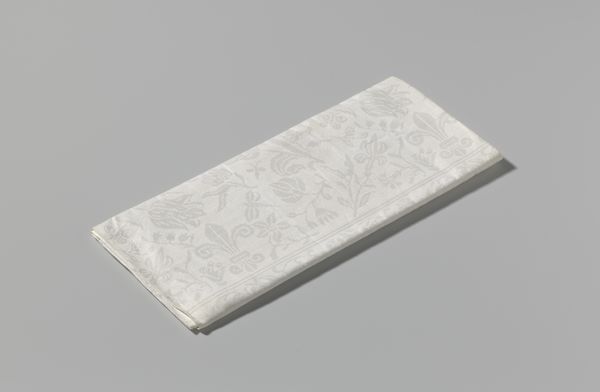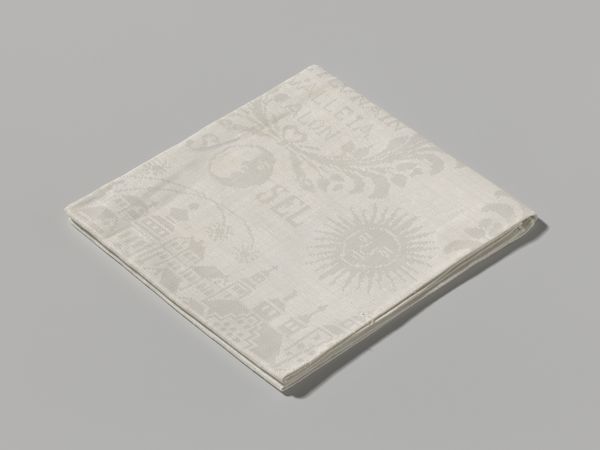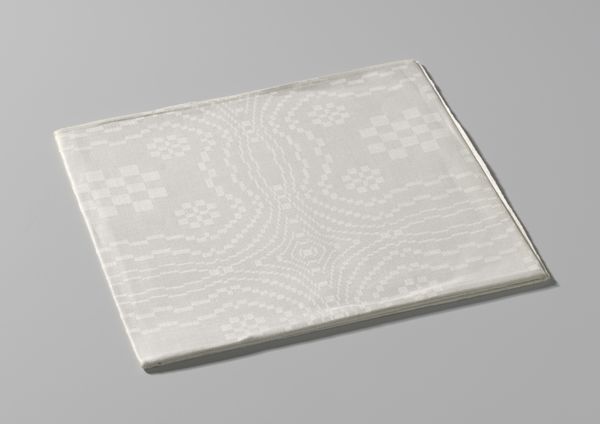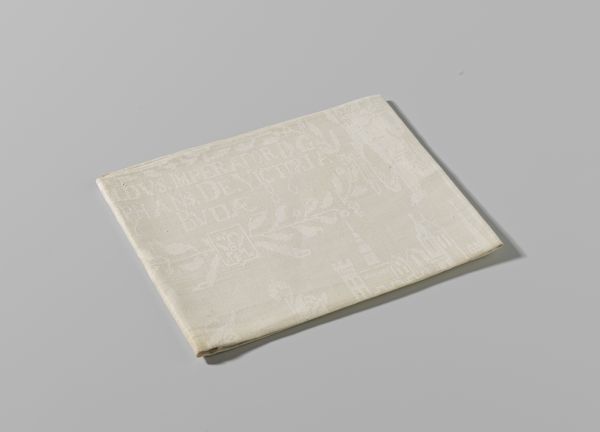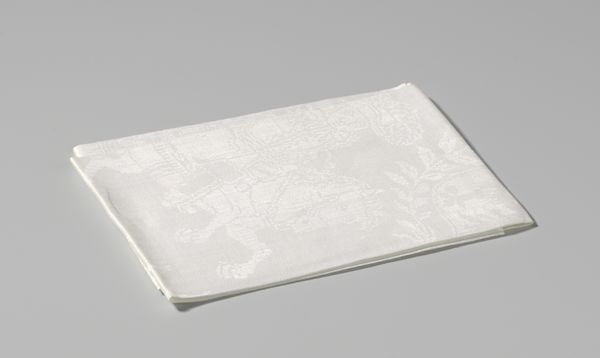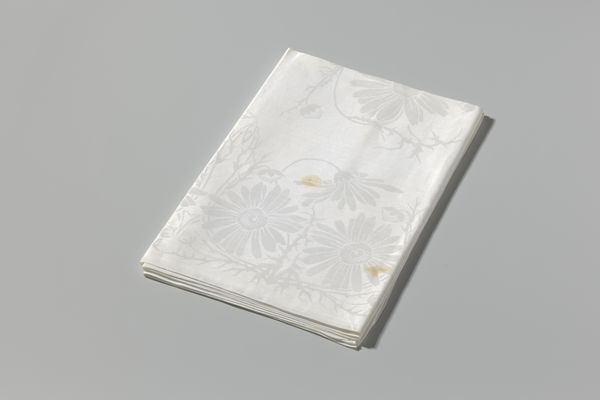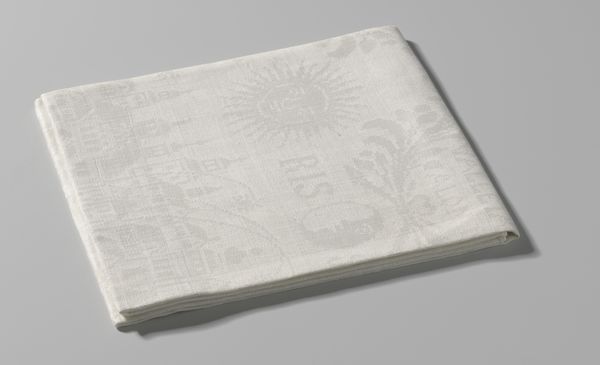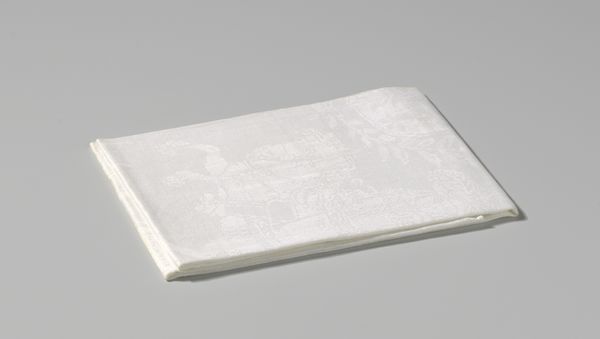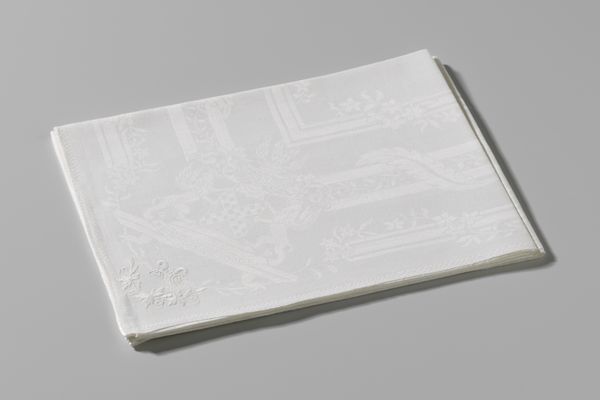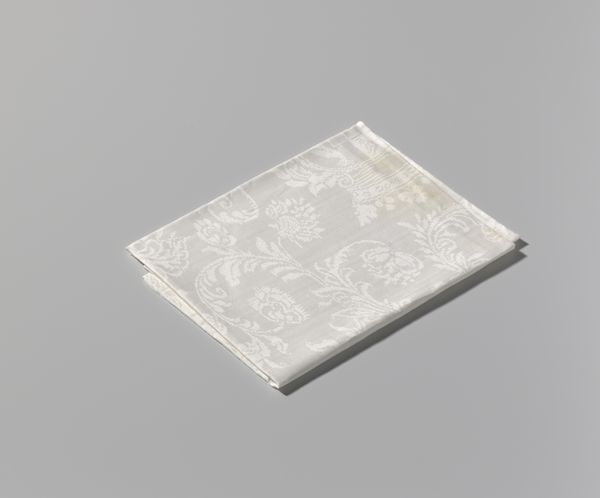
Fragment van een tafellaken met de inname van Rijssel door Eugenius van Savoye after 1708
0:00
0:00
anonymous
Rijksmuseum
weaving, textile
#
narrative-art
#
dutch-golden-age
#
weaving
#
textile
#
history-painting
Dimensions: length 104.0 cm, width 93.0 cm, width 27.5 cm
Copyright: Rijks Museum: Open Domain
This is a fragment of a linen tablecloth, made anonymously to commemorate the capture of Rijssel by Eugene of Savoy. The damask weave, which gives the fabric its intricate pattern, is achieved by manipulating the warp and weft threads in such a way that light reflects differently off each area. This painstaking process results in a subtle contrast between the foreground and background, creating the illusion of depth and texture. The choice of linen elevates this tablecloth beyond mere utility, and damask weaving demonstrates a significant investment of time and skill. The cloth depicts a military victory, but also symbolizes wealth, status, and participation in the burgeoning culture of consumption that defined the era. Tablecloths like these were integral to household rituals, and their decoration provided conversation and entertainment. Remember, everyday objects like this tablecloth carry profound social and cultural significance. They blur the lines between fine art and craft, revealing the intricate connections between labor, politics, and aesthetics.
Comments
No comments
Be the first to comment and join the conversation on the ultimate creative platform.
